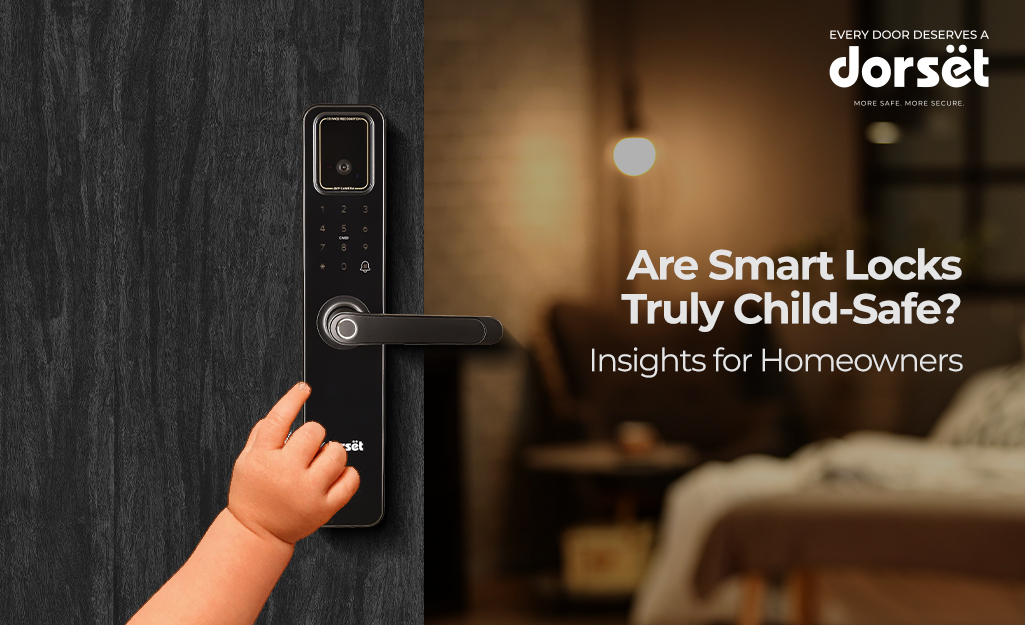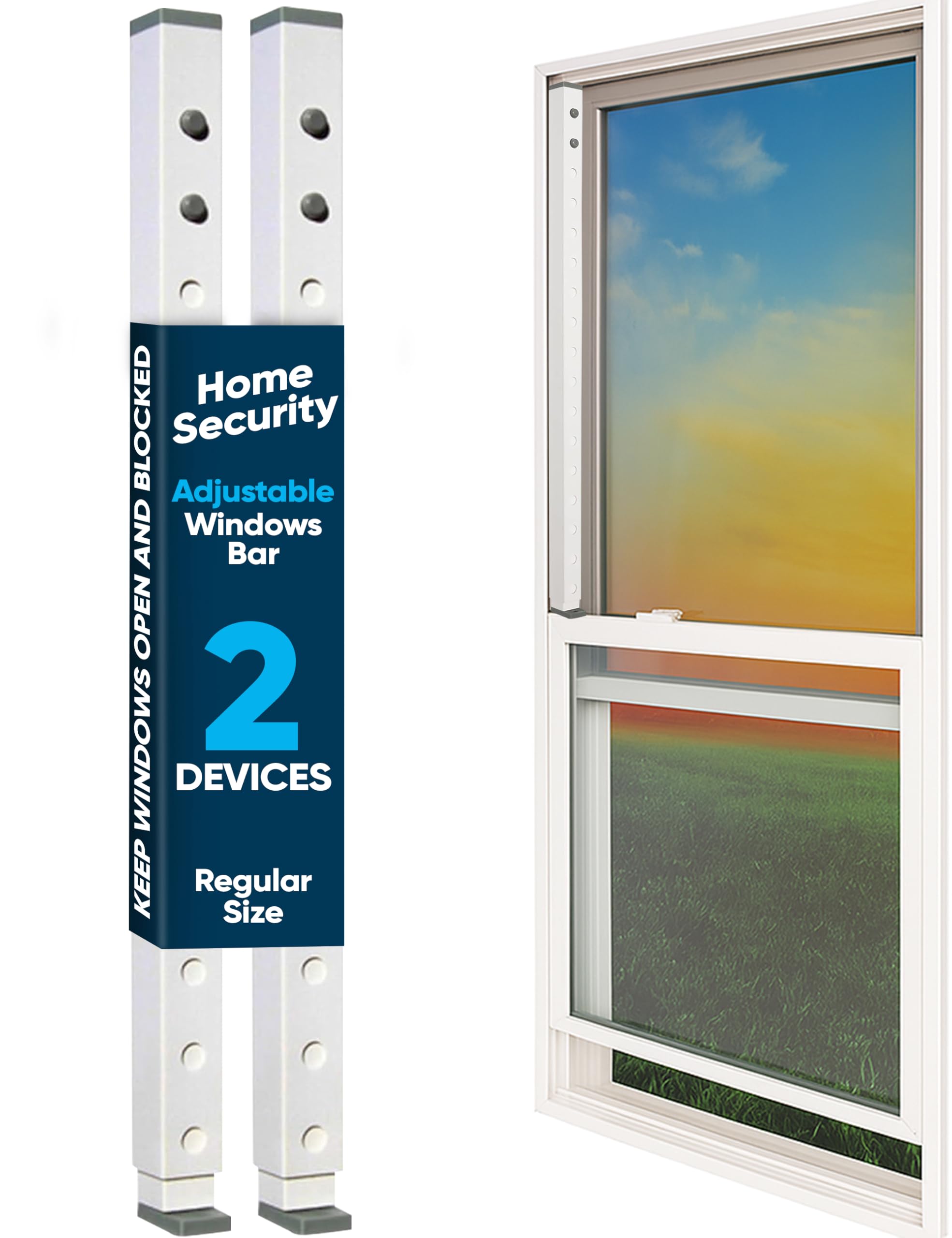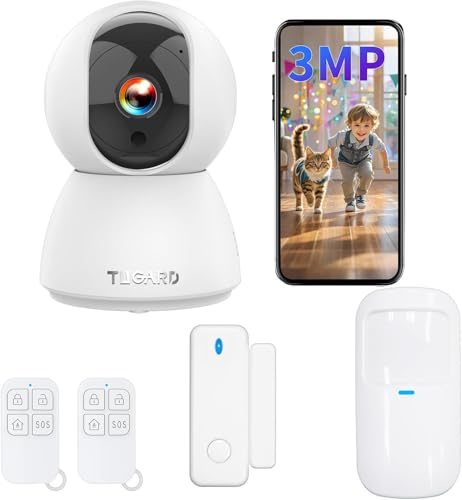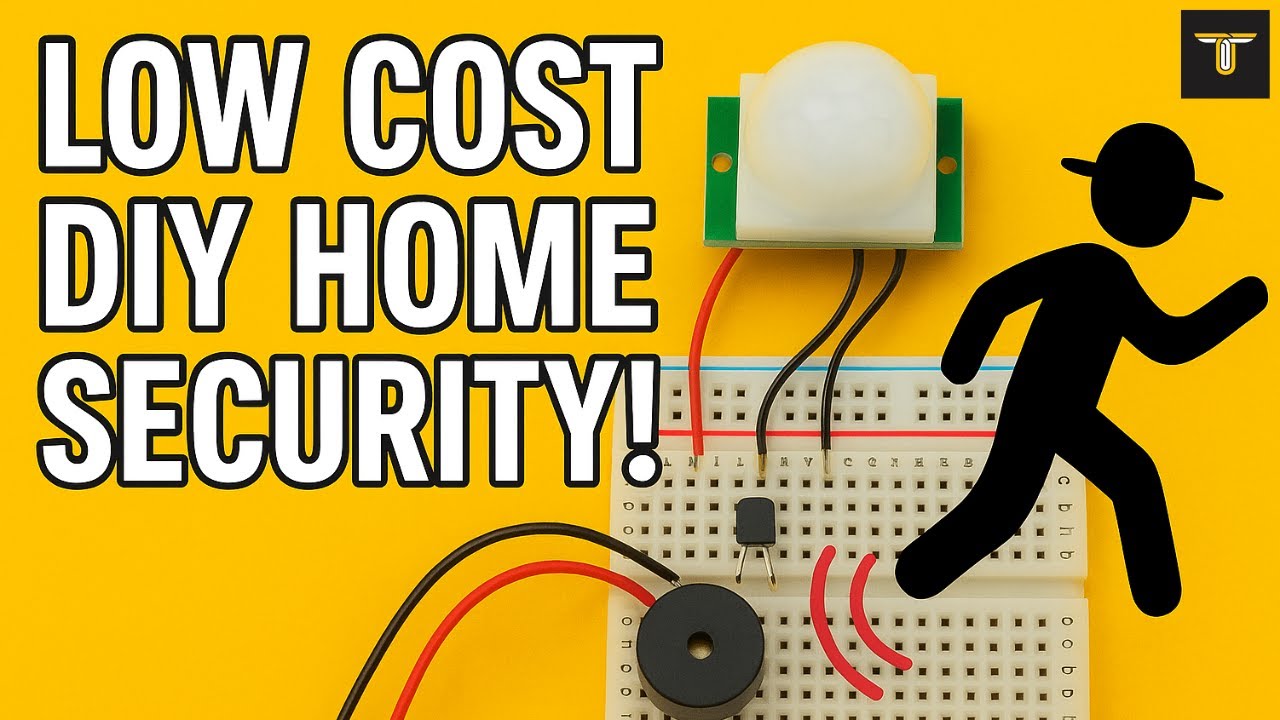Keeping your little ones safe at home is probably your top priority. But with so many potential hazards around, how can you be sure your home is truly secure?
That’s where child safety home devices come in. These smart tools can protect your children from accidents and give you peace of mind. You’ll discover the best devices designed to keep your home safe and your kids out of harm’s way.
Ready to create a safer space for your family? Let’s dive in.

Credit: www.dorsetindia.com
Key Child Safety Devices
Keeping children safe at home is very important for parents. Many devices help protect kids from common dangers.
This guide covers key child safety devices that can prevent accidents and injuries.
Baby Monitors
Baby monitors let parents hear or see their baby from another room. They help watch babies while parents are busy.
Some monitors have video, sound, and temperature features for better care.
Safety Gates
Safety gates block babies from entering dangerous areas like stairs or kitchens. They create safe play zones.
Gates come in many sizes and styles to fit different doorways or openings.
- Pressure-mounted gates for easy setup
- Hardware-mounted gates for stairs
- Walk-through gates with child-proof locks
Cabinet Locks
Cabinet locks keep children from opening drawers and cupboards. They protect kids from sharp objects and chemicals.
Many locks use adhesive or screws and are easy for adults to open but hard for kids.
- Magnetic locks for hidden safety
- Latch locks for easy use
- Sliding locks for double doors
Window Guards
Window guards prevent children from falling out of windows. They are strong bars or screens placed on windows.
These guards allow windows to open for air but keep kids safe.
- Fixed window guards for permanent safety
- Removable guards for emergency exits
- Custom sizes to fit different windows
Corner Protectors
Corner protectors cover sharp edges on furniture. They reduce injuries when children bump into tables or counters.
These protectors are soft and easy to install on corners of different shapes.

Credit: www.amazon.com
Choosing The Right Devices
Keeping children safe at home is very important. Choosing the right safety devices helps protect them from harm.
Many devices are available. Picking the best ones for your home needs careful thought and planning.
Age-appropriate Gear
Safety devices should match the child’s age. Younger children need different tools than older kids.
Check the product labels to see the recommended age. This ensures the device works well and is safe.
- Use outlet covers for babies and toddlers
- Cabinet locks work well for toddlers and preschoolers
- Window guards suit older children
Material Safety
Devices must be made from safe, non-toxic materials. Children often touch and sometimes chew on these items.
Look for products without harmful chemicals. Choose BPA-free and phthalate-free options to avoid risks.
- Plastic parts should be strong and free of sharp edges
- Metal parts should not rust or have sharp points
- Paints and coatings must be lead-free
Ease Of Installation
Choose devices that are easy to install. Simple installation means you can use the device quickly and safely.
Devices that need no tools or just basic tools are best. Follow the instructions carefully to avoid mistakes.
- Look for adhesive options that do not damage walls
- Devices with clear, step-by-step guides save time
- Choose adjustable devices to fit different spaces
Durability And Maintenance
Safety devices should last long and stay strong. Check how well the materials hold up over time.
Regular cleaning and checks help keep devices working properly. Replace any broken or worn parts right away.
- Choose devices with washable surfaces
- Pick materials that resist wear and tear
- Check for easy parts replacement or repair
Tech-enhanced Safety Solutions
Child safety at home is very important. Technology helps parents keep kids safe.
Smart devices give alerts and track children’s movements. They make homes safer.
Smart Monitors With Alerts
Smart monitors watch children and send alerts to parents. They detect sounds and movement.
These monitors can send messages if a child cries or moves too much. Parents get quick updates.
- Audio and video monitoring
- Instant alert notifications
- Night vision for low light
- Two-way communication
Wearable Trackers
Wearable trackers are small devices children wear. They track location in real time.
Parents can see where their child is using a phone app. This helps prevent getting lost.
- GPS location tracking
- Safe zone alerts
- Lightweight and comfortable
- Long battery life
Motion Sensors
Motion sensors detect movement in specific areas of the home. They alert if kids go somewhere unsafe.
Sensors can be placed near doors, windows, or stairs. They help prevent accidents and wandering.
- Easy to install
- Works with alarms and lights
- Customizable alert zones
- Battery or wired power
App-connected Devices
Many safety devices connect to apps. Parents control devices and get alerts on their phones.
Apps show live video, send notifications, and let parents check safety anytime. This adds peace of mind.
- Real-time alerts
- Device control and settings
- History of alerts and events
- Multiple device support
Room-by-room Safety Tips
Child safety devices help protect kids in every room of the house. Each room has unique risks that need special attention.
Using the right safety tools can prevent many accidents. Let’s look at tips for the kitchen, living area, bathroom, and bedroom.
Kitchen Precautions
The kitchen is full of sharp and hot items that can harm children. Keep knives, scissors, and hot pots out of reach.
Use stove knob covers and cabinet locks to stop children from touching dangerous things.
- Install cabinet and drawer locks
- Use stove knob covers and oven locks
- Keep small appliances unplugged and away
- Store knives and sharp tools high up
- Use corner guards on counters
Living Area Safety
The living area has furniture and electronics that can cause injuries. Anchor heavy furniture to walls to prevent tipping.
Cover electrical outlets and keep cords out of reach to avoid shocks and strangulation.
- Anchor bookshelves and TV stands to walls
- Use outlet covers on all unused sockets
- Keep cords tucked away or use cord shorteners
- Place soft padding on sharp furniture edges
- Use baby gates to limit access to stairs
Bathroom Hazards
Bathrooms have slippery floors and water that can cause falls and drowning. Always keep the toilet lid closed and locked.
Use non-slip mats inside and outside the tub. Store medicines and cleaning products in locked cabinets.
- Install toilet seat locks
- Use non-slip mats in tub and on floor
- Store medicines out of reach or locked
- Keep cleaning products in childproof cabinets
- Never leave children unattended in the bathroom
Bedroom Setup
Bedrooms should be safe places for kids to sleep and play. Use cribs with proper rail height and no loose bedding.
Remove small toys that can cause choking. Make sure windows have secure locks or guards.
- Use cribs that meet current safety standards
- Remove pillows, blankets, and stuffed toys from cribs
- Keep small objects away to avoid choking hazards
- Install window guards or locks
- Use nightlights to prevent trips in the dark
Common Hazards To Address
Child safety at home is very important. Many dangers can cause harm if not handled well.
Knowing common hazards helps parents use the right safety devices. This keeps children safe.
Choking Risks
Small objects can cause choking. Toys, coins, and food pieces are common risks.
Keep small items out of reach. Use safety locks on drawers and boxes to protect children.
- Check toys for small parts
- Cut food into small pieces
- Store coins and buttons safely
Falls And Trips
Falls cause many injuries in children. Stairs, slippery floors, and clutter are main causes.
Install gates on stairs and use non-slip mats. Keep floors clear of toys and cords.
- Use safety gates on stairs
- Apply non-slip rugs and mats
- Remove loose wires and clutter
Electrical Safety
Electrical outlets can shock children. Loose wires and plugs also pose dangers.
Use outlet covers and hide cords. Teach children to avoid electrical devices.
- Cover unused outlets
- Secure loose wires
- Keep devices out of reach
Poison Prevention
Poisons can be found in cleaning supplies and medicines. Children may swallow them by mistake.
Store poisons in locked cabinets. Always keep products in their original containers.
- Lock all cabinets with poisons
- Keep medicines out of reach
- Never transfer poisons to food containers
Maintenance And Regular Checks
Child safety home devices keep kids safe by alerting adults to dangers. Regular maintenance makes sure these devices work well.
Checking and caring for your devices prevents failures and keeps your home secure for children.
Device Functionality Testing
Test safety devices often to confirm they work correctly. This stops any surprises when you need them most.
Check alarms, sensors, and locks by triggering them gently. Listen and watch for proper responses.
- Press buttons or test sensors monthly
- Ensure alarms sound loudly
- Verify locks engage and release smoothly
- Replace or repair faulty parts immediately
Battery Replacement
Batteries power most child safety devices. Replace batteries before they run out to keep devices active.
Use the right battery type and follow device instructions. Mark the replacement date to track future changes.
- Check batteries every 3 to 6 months
- Use fresh batteries from trusted brands
- Remove batteries if the device won’t be used for long
- Dispose of old batteries safely
Cleaning And Upkeep
Clean devices regularly to avoid dust and dirt buildup. Dirt can block sensors or buttons.
Use a soft cloth and mild cleaner. Avoid water inside electronic parts to prevent damage.
- Wipe surfaces weekly
- Check for cracks or damage
- Tighten loose screws or parts
- Keep devices away from moisture and heat
Budget-friendly Safety Options
Keeping children safe at home is important. You do not need to spend a lot of money to protect them.
There are many low-cost tools and ideas that help create a safe space for kids.
Affordable Must-haves
Some safety devices cost little but offer great protection. These are easy to install and use daily.
- Outlet covers to prevent electric shocks
- Cabinet locks to keep dangerous items away
- Corner guards to soften sharp furniture edges
- Door stoppers to stop doors from closing fast
- Window guards to prevent falls
Diy Safety Solutions
You can create safety tools with common household items. These cost less than store-bought devices.
Simple crafts can protect your child without extra spending.
- Use foam pipe insulation on sharp edges
- Secure loose cords with twist ties or clips
- Place rugs with non-slip pads to stop falls
- Use Velcro strips to fasten cabinet doors
- Make a soft gate using pillows or cushions
Where To Find Deals
Look for discounts and sales to buy safety devices at lower prices. Many stores offer good deals regularly.
Online marketplaces and local shops often have budget options for child safety.
- Check clearance sections in stores
- Use coupons or discount codes online
- Buy in sets for better prices
- Look for secondhand safety items in good condition
- Shop during holiday sales or special events

Credit: www.amazon.com
Frequently Asked Questions
What Are The Best Child Safety Home Devices?
Top child safety devices include outlet covers, cabinet locks, stair gates, and corner guards. These devices prevent accidents and injuries at home. Choose products that are easy to install and durable for long-term safety.
How Do Child Safety Devices Prevent Accidents?
Child safety devices block access to dangerous areas and objects. They reduce risks like electric shocks, falls, and poisoning. Installing these devices creates a safer environment for children to explore freely.
Are Smart Home Devices Effective For Child Safety?
Yes, smart home devices like monitors and alarms enhance child safety. They provide real-time alerts and remote monitoring. These devices help parents respond quickly to emergencies and monitor children’s activities efficiently.
Where Should I Install Child Safety Devices At Home?
Install safety devices near electrical outlets, cabinets, stairways, and sharp furniture edges. Focus on high-risk areas where children spend most time. Proper placement ensures maximum protection and accident prevention.
Conclusion
Ensuring child safety at home is crucial for peace of mind. Devices like safety gates and corner guards help protect kids. Simple tools can prevent accidents and make homes safer. Parents should assess their space and needs. Consider age-appropriate devices for effective safety.
Regular checks ensure devices work properly. Small changes create a secure environment for children. With the right tools, parents can focus on joyful family moments. Safety doesn’t have to be complicated. It starts with awareness and action. Make child safety a priority today.
Your home can be both fun and secure.
20 min read





